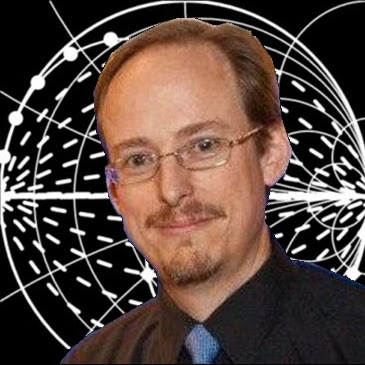Hans Gregory Schantz
age ~58
from Owens Cross Roads, AL
- Also known as:
-
- Hans G Schantz
- Hans G Shantz
- Phone and address:
-
7071 Pale Dawn Pl SE, Owens X Rds, AL 35763
2566837376
Hans Schantz Phones & Addresses
- 7071 Pale Dawn Pl SE, Owens Cross Roads, AL 35763 • 2566837376
- 2416 Little Cove Rd, Owens Cross Roads, AL 35763
- Hampton Cove, AL
- Madison, AL
- Tennille, GA
- 6222 Rime Village Dr, Huntsville, AL 35806 • 2569711219
- Austin, TX
- Livermore, CA
- Sioux Falls, SD
Work
-
Position:Production Occupations
Isbn (Books And Publications)
-
Enhedens Dilemma: En Analyse Af Bestsrbelserne For At Skabe Enhed Mellem Kirkernes Verdensrad Og Den Romersk-Katolske Kirke
view source -
Author:Hans Jrgen Schantz
-
ISBN #:8775321130
Us Patents
-
Apparatus For Establishing Signal Coupling Between A Signal Line And An Antenna Structure
view source -
US Patent:6512488, Jan 28, 2003
-
Filed:Jul 24, 2001
-
Appl. No.:09/912952
-
Inventors:Hans Gregory Schantz - Huntsville AL
-
Assignee:Time Domain Corporation - Huntsville AL
-
International Classification:H01Q 928
-
US Classification:343795, 343865
-
Abstract:An apparatus for coupling a signal supply with an antenna including first and second elements. The signal supply delivers a signal to the antenna at a connection locus. The first element has a first edge and the second element has a second edge; the connection locus includes part of the first and second edges. The apparatus includes a first and second feed structure. The first feed structure extends a feed distance from the signal supply to the second edge and divides the first element into two lands in spaced relation with the first feed structure to establish a separation distance intermediate the first feed structure and the two lands. The second feed structure couples the signal supply with the first proximal edge. The separation distance establishes a signal transmission structure between the two lands and the first feed structure.
-
Semi-Coaxial Horn Antenna
view source -
US Patent:6538615, Mar 25, 2003
-
Filed:Aug 30, 2000
-
Appl. No.:09/651282
-
Inventors:Hans G. Schantz - Huntsville AL
-
Assignee:Time Domain Corporation - Huntsville AL
-
International Classification:H01Q 1300
-
US Classification:343786, 343773
-
Abstract:A semi-coaxial horn antenna transmits and receives electromagnetic waves, including impulse radio waves. The antenna includes an inner conductor that is surrounded by a cone-shaped dielectric, and an outer conductor that is conformally attached to the cone shaped dielectric. In embodiments, the inner conductor is a hollow metallic cylinder that is able to slide over a separate metal shaft, which may be part of a portable hand-tool device. The dielectric constant of the cone shaped dielectric may be selected to match a target medium. The outer conductor has a cross-section that is substantially an arc shape, and defines a sector angle that determines an impedance along the length of the antenna.
-
Planar Loop Antenna
view source -
US Patent:6593886, Jul 15, 2003
-
Filed:Jan 2, 2001
-
Appl. No.:09/753243
-
Inventors:Hans Gregory Schantz - Huntsville AL
-
Assignee:Time Domain Corporation - Huntsville AL
-
International Classification:H01Q 138
-
US Classification:343700MS, 343741, 343866
-
Abstract:An apparatus for conveying electromagnetic energy intermediate a host device and a medium substantially adjacent to the apparatus includes: (a) a transceiver for transmitting the energy to and receiving the energy from the medium; (b) a transmission structure for conveying signals to or from the host device; and (c) a feed structure coupling the transceiver with the transmission structure. The transceiver includes a planar metal layer arrayed upon a dielectric substrate. The metal layer is bounded by a first edge and a second edge. The first and second edges cooperate to form a bight having a first and a second arm establishing a metal-free area intermediate the first and second arms. The first arm presents a first terminal locus and the second arm presents a second terminal locus. The feed structure is coupled with the first and second terminal loci to effect the coupling.
-
System And Method For Detecting An Intruder Using Impulse Radio Technology
view source -
US Patent:6614384, Sep 2, 2003
-
Filed:Sep 14, 2001
-
Appl. No.:09/952206
-
Inventors:David J. Hall - Madison AL
Scott M. Yano - Huntsville AL
Hans G. Schantz - Huntsville AL -
Assignee:Time Domain Corporation - Huntsville AL
-
International Classification:G01S 1356
-
US Classification:342 28, 342 21, 342 27, 342 59, 342118, 342126, 342450, 342463, 342465, 375130, 375140
-
Abstract:An intrusion detection system and method are provided that can utilize impulse radio technology to detect when an intruder has entered a protection zone. In addition, the intrusion detection system and method can utilize impulse radio technology to determine a location of the intruder within the protection zone and also track the movement of the intruder within the protection zone. Moreover, the intrusion detection system and method can utilize impulse radio technology to create a specially shaped protection zone before trying to detect when and where the intruder has penetrated and moved within the protection zone.
-
Apparatus For Establishing Signal Coupling Between A Signal Line And An Antenna Structure
view source -
US Patent:6642903, Nov 4, 2003
-
Filed:May 15, 2001
-
Appl. No.:09/855413
-
Inventors:Hans Gregory Schantz - Huntsville AL
-
Assignee:Time Domain Corporation - Huntsville AL
-
International Classification:H01Q 928
-
US Classification:343795, 343865
-
Abstract:An apparatus for coupling a signal supply with an antenna including first and second elements. The signal supply delivers a signal to the antenna at a connection locus. The first element has a first edge and the second element has a second edge; the connection locus includes part of the first and second edges. The apparatus includes a first and second feed structure. The first feed structure extends a feed distance from the signal supply to the second edge and divides the first element into two lands in spaced relation with the first feed structure to establish a separation distance intermediate the first feed structure and the two lands. The second feed structure couples the signal supply with the first proximal edge. The separation distance establishes a signal transmission structure between the two lands and the first feed structure.
-
Impulse Radar Antenna Array And Method
view source -
US Patent:6667724, Dec 23, 2003
-
Filed:Nov 30, 2001
-
Appl. No.:09/998480
-
Inventors:Mark A. Barnes - Madison AL
Charles G. Gilbert - Huntsville AL
Herbert U. Fluhler - Madison AL
Hans G. Schantz - Huntsville AL
Soumya K. Nag - Huntsville AL
David M. Dickson - Huntsville AL -
Assignee:Time Domain Corporation - Huntsville AL
-
International Classification:G01S 1304
-
US Classification:343893, 342 27
-
Abstract:An antenna array comprising a ground plane and a plurality of elements mounted thereon, said elements being capable of emitting and receiving ultra wideband emissions. Elements are arrayed on the ground plane in two parallel rows, a transmitting row, and a receiving row, such that a given element in the receiving row is aligned in at least one direction with a corresponding element in the transmitting row. Additionally, the elements are configured on the ground plane to elicit a symmetrical product response in the azimuthal plane, and to produce horizontally polarized signals. An alternative embodiment places the elements with unique inter-element spacing within the rows. An embodiment comprises a fence structure between rows. A method for use comprises the step of transmitting a signal via an element in the transmitting row and receiving said signal through an element in the receiving row, not aligned with the transmitting element.
-
Ultra Wideband Antenna Having Frequency Selectivity
view source -
US Patent:6774859, Aug 10, 2004
-
Filed:Jun 1, 2002
-
Appl. No.:10/077340
-
Inventors:Hans G. Schantz - Huntsville AL
Glenn P. Wolenec - Madison AL -
Assignee:Time Domain Corporation - Huntsville AL
-
International Classification:H01Q 1112
-
US Classification:343742, 343741, 343866
-
Abstract:An electromagnetic antenna apparatus exhibits a generally continuous signal response between a first frequency and a second frequency, and further exhibits a deviation from the signal response in a frequency region centered substantially at a selected frequency between the first frequency and the second frequency. The apparatus includes: (a) an antenna transceiving element; (b) a feed structure coupled with the antenna receiving element for communicating transceiving signals with the antenna transceiving element; and (c) a discontinuity structure in the antenna transceiving element coupled with the feed structure. The discontinuity structure is configured for effecting return of selected transceiving signals to the feed structure as return signals. The return signals effect the deviation.
-
System And Method For Detecting An Intruder Using Impulse Radio Technology
view source -
US Patent:6822604, Nov 23, 2004
-
Filed:Aug 1, 2003
-
Appl. No.:10/632425
-
Inventors:David J. Hall - Madison AL
Scott M. Yano - Huntsville AL
Hans G. Schantz - Huntsville AL -
Assignee:Time Domain Corp. - Huntsville AL
-
International Classification:G01S 1356
-
US Classification:342 28, 342 21, 342 27, 342 59, 342118, 342126, 342450, 342463, 342465, 375130, 375140
-
Abstract:An intrusion detection system and method are provided that can utilize impulse radio technology to detect when an intruder has entered a protection zone. In addition, the intrusion detection system and method can utilize impulse radio technology to determine a location of the intruder within the protection zone and also track the movement of the intruder within the protection zone. Moreover, the intrusion detection system and method can utilize impulse radio technology to create a specially shaped protection zone before trying to detect when and where the intruder has penetrated and moved within the protection zone.
Resumes

Chief Scientist At Q-Track Corporation
view sourcePosition:
Chief Scientist at Q-Track Corporation, Consulting Director at Baby Dipper, LLC
Location:
Huntsville, Alabama Area
Industry:
Wireless
Work:
Q-Track Corporation since Oct 2002
Chief Scientist
Baby Dipper, LLC since 2008
Consulting Director
Next-RF, Inc. 2002 - 2005
Principal Consulting Engineer
Time Domain Corporation 1999 - 2002
Antenna Engineer
ITT Educational Services, Inc. - Austin, TX May 1994 - Jul 1998
Instructor
Chief Scientist
Baby Dipper, LLC since 2008
Consulting Director
Next-RF, Inc. 2002 - 2005
Principal Consulting Engineer
Time Domain Corporation 1999 - 2002
Antenna Engineer
ITT Educational Services, Inc. - Austin, TX May 1994 - Jul 1998
Instructor
Education:
The Ohio State University 1998 - 1999
The University of Texas at Austin 1990 - 1995
Purdue University 1989 - 1990
Purdue University 1984 - 1988
The University of Texas at Austin 1990 - 1995
Purdue University 1989 - 1990
Purdue University 1984 - 1988
Skills:
Wireless
RF
Electronics
Antennas
Electromagnetics
Systems Engineering
Engineering
Product Development
Testing
Program Management
Project Management
Telecommunications
Sensors
Start-up Ventures
Intellectual Property
RFID+
Matlab
Integration
Patents
Semiconductors
Physics
Engineering Management
System Architecture
R&D
Radar
Microwave
PCB design
Aerospace
Image Processing
System Design
Optimization
C++
Digital Signal Processors
Hardware Architecture
Analog
RF
Electronics
Antennas
Electromagnetics
Systems Engineering
Engineering
Product Development
Testing
Program Management
Project Management
Telecommunications
Sensors
Start-up Ventures
Intellectual Property
RFID+
Matlab
Integration
Patents
Semiconductors
Physics
Engineering Management
System Architecture
R&D
Radar
Microwave
PCB design
Aerospace
Image Processing
System Design
Optimization
C++
Digital Signal Processors
Hardware Architecture
Analog

Hans Schantz
view sourceName / Title
Company / Classification
Phones & Addresses
Baby Dipper, LLC
DEVELOP/MARKET/SELL CHILDREN'S PRODUCTS/HOUSEWARES
DEVELOP/MARKET/SELL CHILDREN'S PRODUCTS/HOUSEWARES
Hampton Cove, AL
Flickr
Plaxo

Dr. Hans Schantz
view sourceHuntsville, ALCTO at The Q-Track Corporation

Hans Schantz
view sourceFriends:
Dana Schantz, Dory Schantz
Youtube
Googleplus

Hans Schantz
Lived:
Huntsville, AL
Pocatello, ID
Pocatello, ID
Work:
Q-Track Corporation - Father, Scientist, Entrepreneur
Time Domain Corporation
IBM
LLNL
ITT Technical Institute
Time Domain Corporation
IBM
LLNL
ITT Technical Institute
Education:
Purdue University, The University of Texas at Austin, The Ohio State University
Get Report for Hans Gregory Schantz from Owens Cross Roads, AL, age ~58















